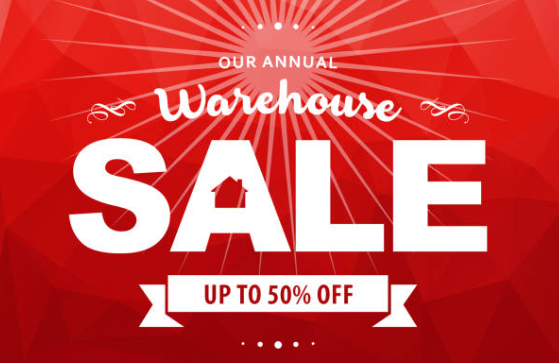800.605.1859 - FREE SHIPPING ON MOST ITEMS OVER $99.00
Accessories
lighting
Designers
- ACHILLE CASTIGLIONI
- ALBERTO MEDA
- ALESSANDRO MENDINI
- ALEXANDER GIRARD
- ALFREDO HABERLI
- ALVAR AALTO
- ANNA CASTELLI FERRIERI
- ANTONIO CITTERIO
- ARNE JACOBSEN
- BARBER & OSGERBY
- CARLO ALESSI
- CARLO MOLLINO
- CHARLES & RAY EAMES
- CHARLOTTE PERRIAND
- EERO SAARINEN
- EILEEN GRAY
- ENZO MARI
- ERNESTO GISMONDI
- ETTORE SOTTSASS
- ACHILLE CASTIGLIONI
- ALBERTO MEDA
- ALESSANDRO MENDINI
- ALEXANDER GIRARD
- ALFREDO HABERLI
- ALVAR AALTO
- ANNA CASTELLI FERRIERI
- ANTONIO CITTERIO
- ARNE JACOBSEN
- BARBER & OSGERBY
- CARLO ALESSI
- CARLO MOLLINO
- CHARLES & RAY EAMES
- CHARLOTTE PERRIAND
- EERO SAARINEN
- EILEEN GRAY
- ENZO MARI
- ERNESTO GISMONDI
- ETTORE SOTTSASS
In-Stock Items

How To Disinfect Wooden Furniture
May 16, 2022
Wood furniture is a popular accessory in many households mainly due to its staying power. Besides the durability aspect, a well-made wood piece never goes out of style.
Of course, you will need to learn how to disinfect it the right way if you want to make your precious pieces last.
The sections below discuss how to properly disinfect your wood furniture without damaging it.
Disinfecting Your Wooden Furniture
Dust the Furniture
Dust is made up of a range of things, such as material fibers, paper fibers, hair, plant pollen, and skin cells. If left undisturbed, it builds up in a filmy layer and may even scratch the surface of your wood furniture.
So you should always dust your furniture before you even think of disinfecting it. This not only removes the particles but also makes it easier for you to work through your furniture's surfaces while disinfecting them.
The right way to dust your furniture is to capture and eliminate all the dust. You can use a clean cloth, microfiber cloth, or a duster to do so. Microfiber cloths are a better alternative because they have split fibers that trap dust particles as you wipe down the wood's surface.
For the best results, you should dampen the microfiber cloth a little bit. While at it, you should be careful not to spread the dust around the wood surface with a dry cloth. It'll scatter in the air and float for some time before landing right back on the furniture pieces.
Great Dust Cleaner Products
Here are some of the best dust cleaner products that you can use on your wood furniture:
- Feather duster – This removes dust from wood furniture and other delicate surfaces like mirrors, picture frames, and silk lampshades.
- Lambs-wood duster – This contains lanolin, which makes dust cling to the cleaning material.
- Microfiber cloths - These are excellent lint-free dusting tools.
Now that you've dusted your pieces, it's time to apply a disinfectant.
Apply a Disinfectant
The main reason for disinfecting your furniture pieces is to get rid of microorganisms or reduce them to a level that doesn't pose a health risk. That said, you'll need a disinfectant that doesn't damage your wood furniture's finish.
Here are some of the best disinfectants that you can use:
Great Disinfectants for Wood Furniture
- The World Health Organization (WHO) advocates using normal bleach to disinfect wood surfaces.
For this, you'll need to prepare a mixture of one part bleach and nine parts water. Then apply the resulting bleach solution with a soft cloth. Be sure to clean off the bleach solution using a damp rag before it dries out.
Consider using Virox disinfectant. It is a hydrogen-peroxide-based cleaner that poses no harm to the user, the furniture surface, and the immediate surroundings. Most healthcare facilities use this type of disinfectant.
- Alcohol is also an effective disinfectant that you can prepare at home. Simply mix isopropyl alcohol with water in the ratio of 70 percent to 30 percent or 60 percent to 40 percent.
- Another effective homemade disinfectant is white vinegar. Fill a spray bottle with a cup of white vinegar, two cups of water, and about five drops of dish soap. The white vinegar disinfects, while the dish soap cleans the soiled wooden surface.
- Pine-sol is also a natural disinfectant for wood surfaces. Before using it, you should dilute the Pine-sol; otherwise, it will leave a tacky finish on your furniture piece. Ideally, dilute ¼ cup of pine-sol with a gallon of water.
Disinfectants to Avoid for Wood Furniture
-
Don't use abrasive disinfectants like baking soda, denatured alcohols (white spirit), or furniture polish.
-
The disinfectant should be free of solvents like turpentine and paint thinners.
Rinse off the Disinfectant
Once you have thoroughly cleaned your furniture pieces with your chosen disinfectant, the next step is to rinse them off. This step is essential because it gets rid of all remnants of the disinfectant, which would otherwise eat away the wood finish if allowed to settle.
To rinse off the disinfectant:
- Take a clean microfiber cloth and dip it in warm water.
- Wipe down your wooden furniture.
- Remember, the fabric should be wet but not soggy, as you don't want to drench the wood.
If you're using dish soap as a cleaning detergent, repeat the rinsing process several times. You want to eliminate any dish soap film deposits left on the wood's surface.
Apply a Wood Wax or Finish
Once you've disinfected your wood furniture pieces, the next step is to apply a wood finish. Another suitable alternative to wood polish is furniture wax.
There are several reasons behind applying wax or finish. They include:
- Maintain the color of your wood furniture for a long time
- Protection from moisture
- Providing a deep shine
- Act as a lubricant
First, apply the polish or wax to a microfiber cloth and rub it into the furniture's surface. There are two main benefits of polishing or waxing your wooden surfaces. First, it improves the external look of your wood furniture by giving it a new, shiny appearance.
The second benefit of applying polish or wax to wood is that these substances give the wood an extra protective coating. The coating keeps away scratches and smudges.
To apply wax, pour a tablespoon of your preferred wax product into the center of a microfiber cloth. Roll the cloth around to spread the wax all over it.
Next, rub the wax-drenched cloth on the wood furniture. Begin in one small area and move on to the rest of the wood surface. Then allow the polish to dry for around half an hour before buffing in circular motions to eliminate any excess wax and achieve an even sheen.
It is important to note that wax has a low melting point, meaning the wiping action generates heat that might melt it. So the more you buff the wax, the shinier the wood surface. And if done correctly, you'll soon notice the appearance of the wood furniture turning from a matte finish to a bright luster.
Great Wax Finish Products
Investing in a good wood wax product will help you extend the timeless appeal of your wood furniture. Here's a list of excellent furniture wood wax to consider.
- Minwax paste finishing wax
- Renaissance polish
- Beeswax furniture polish
- Daddy's Van All Natural Unscented Beeswax Furniture polish
- Howard paste
- Wood seasoning multipurpose beeswax
You can also make a DIY homemade wood polish. Simply mix a cup of olive oil and ¼ cup of white vinegar. Then add about 2-teaspoons of lemon oil into the mixture, and you're good to go.
Waxes to Avoid for Wooden Furniture
-
Oil-based polyurethane leaves a yellowing wood finish
-
Avoid wood waxes with solvents, mineral oils, and petroleum by-products
-
Waxes that don't offer waterproof coat
The Bottom Line
Your wood furniture may become a source of illness if not cleaned and disinfected regularly. Dust particles that settle on wood surfaces can lead to allergic reactions, especially for young kids.
While cleaning wood may seem complicated, a simple approach is always the best. Before disinfecting your pieces, you should first ask your furniture vendor for tips on cleaning the piece as wood surfaces differ across the spectrum.
That said, a good rule of thumb is to begin with the mildest disinfectant and work your way up. Remember to test new wood disinfectants in a small area before wiping down the entire chair, table, or cabinet.
Also in News
Subscribe
Sign up to get the latest on sales, new releases and more …




